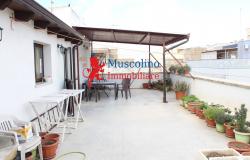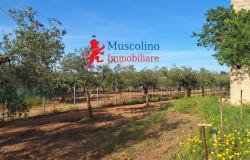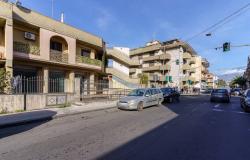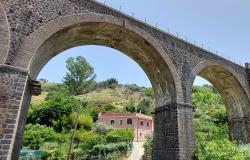Hi - usually its because
Submitted by Ram on Wed, 12/02/2009 - 11:58In reply to A newbie all over again! by Annec
Hi - usually its because they wont want to dirty the new infissi with the intonaco - its a messy job! Theres no hard and fast rule - you're the client, so you can do what you like - but you're in Sicily so bear in mind that builders often only will do things one way, 'cos thats how its done in Sicily'.....
My house was re-plastered
Submitted by Anonymous (not verified) on Wed, 12/02/2009 - 13:05In reply to A newbie all over again! by Annec
My house was re-plastered entirely before any windows and doors were fitted. The reason I was given was that the passage of air helped speed up the drying process. Mind you, that was in March/April and the weather was quite mild. I wonder if it would be the same if it was this time of year?But the 'plaster' they used wasn't like the plaster I'd seen used in the UK - it was more like a thinned down fine gritty cement.
In reply to A newbie all over again! by Annec
is that how yoy spell it and will it be deleted anyway for being French... anyway both i and Penny responded to this before and am not sure why it is now no longer there or even if its the same person posting... Caroles point to my mind is the most valid re plastering italian style... if its a full restructure job there will be coarse cement sand mixes sprayed onto the wall followed by finer mixes and if you do not wnat the finish Carol has a finer normal plaster coat .. this means hundreds of gallons of water ...well almost held onto your walls slowly drying out..and the quickest way to dry is fresh air...so logical windows go in last ...even if its a damp winter down there ... airflow is the solution to problems with humidity...by the way my opinion is that Italian builders do not often do very smooth plaster finishes because they are unable too .. skimming is quite skilled and most builders have a wealth of abilities but not plastering so they tend to use the method carol describes ..very fine sand cement mix ..with a dash of lime.. this leads to damp in many properties that have not good drainage... the other factor is that the builders prefer to do it their way..rather than smooth because if you want smooth they call in another person who can do it who bills you for that work ...hence builder looses a bit of his work so less money for him... but as Ram says ...your the boss... contract it the way you want and Sicily or not if they do not do it that way .. dont pay them ...make it clear and definite within the contract... and if you do go windows first then plaster buy a dehumidifier and dry the place up... but it could lead to cracking..ie ..it drys too quickly...
Plaster finish
Submitted by Badger on Wed, 12/02/2009 - 14:02In reply to A newbie all over again! by Annec
Agree with Adriatica, that is better to have the finish completed first and allowed to dry out. As he says, the builder cannot always finish to the standard of the original.We had the same problem here, that all the plastering was completed very well,.. the finishing "recommended builder" came in and messed up as much as possible with the good plasterwork, then said it was the work of the painter and decorator to correct it all. He was a P&D, so it was just another excuse to get more money. So the court case goes on, as refused to pay!!!
You should always make a
Submitted by Capo Boi on Wed, 12/02/2009 - 15:24In reply to A newbie all over again! by Annec
I'm not sure you are being told the truth here. You should always make a house watertight first. Plaster afterwards. You don't have to leave windows open, the moisture in plaster (1 to 7 days at the very most) will evaporate into the atmosphere....through walls, ceilings etc. Cracking is mainly because of changes in temperature. You would'nt leave windows open or as holes in the UK, so why should you do so in Italy?
A further thought....paint
Submitted by Capo Boi on Wed, 12/02/2009 - 15:32In reply to A newbie all over again! by Annec
diference in terms
Submitted by adriatica on Wed, 12/02/2009 - 16:36In reply to A newbie all over again! by Annec
plaster in the UK sense is a skimmed coating that is very thin put on generally plaster board... and is easy to dry out...when it happens here on say old walls...they are stripped of the original loose plasetr work..and then basically a compressor blows a cement mortar mix onto the walls to provide a squared off look.. at places this coast can be maybe an inch or so in depth... then a finishing coast again of a mortar with much finer sand is applied... this is finished in circular patterns and is a rustic look.. a more polished finish requires what we in the UK would call plaster...drying times vary from a few months to several.. .. depending not so much on the weather but also more importantly the house... if it has /had damp problems already... in an old building not designed to have a virtually waterproof coating on internal walls it will never dry... howveer problems are not limited to only old builds... all you have to do is to go in quite a large percentage of Italian modern buildings and you will find damp patches everywhere... especialley at ground lower ground level..it seems acceptable to them... many of these problems can be sorted by allowing air flow but this seems a sort of new concept here ...even though you can buy air covers in almost any DIY place to allow breathing blocks/holes in walls.. so i dispute pretty strongly that a house in Italy being sprayed with several layers of cement would dry out in a max of seven days... especially with no air flow
The Base Rendering coat
Submitted by Badger on Wed, 12/02/2009 - 16:57In reply to A newbie all over again! by Annec
Capo Boi.Depending on the age of the house, there is normally a base coat that is sprayed on to level the walls as you require. This needs quite a few weeks to dry out, before the final plaster coat is applied, so air circulation is required. Most plasterers in Italy use a ready mixed coating as a finish, very thin coat, that would only take a few days to dry out. On that, it is better to put the sealer before painting.
Hello Badger, Think I agree
Submitted by Capo Boi on Wed, 12/02/2009 - 17:17In reply to A newbie all over again! by Annec
Falso telaio
Submitted by MichaelM on Wed, 12/02/2009 - 17:52In reply to A newbie all over again! by Annec
Once the structural work was done on our house, we had to order the doors and windows and wait for 60 days to have them delivered. As the walls were finished off they fitted a 'falso telaio' which is a softwood frame that the windows and doors will fit into. The walls were then plastered around these frames. While we waited for the actual windows and doors to arrive, we fitted our own temporary glass panels into these frames. Very cheap and very easy to fit with pieces of beading and insulation tape. When the actual windows arrived we took them out and fitted the real ones. Never noticed the draft!
All of this depends on your
Submitted by Ram on Thu, 12/03/2009 - 05:03In reply to A newbie all over again! by Annec
All of this depends on your 'base coat' - if you are going to use a cement based coat it needs a long time to dry. If you have a stone house - as in a pietra viva - common here in this part of Sicily, its best not to use a cememnt based product, as it doesnt allow the stone to breathe. Nowadays a bio calce - lime based ontonaco is advised as it doesnt reduce the trasnpiration of the stone, but it is much ore expensive - (about 15 euros a bag more expensive) but you wont get the damp or salt leaching that will occur with a cement base. Once that is done, it will need intonaco - a finer, more typical English palster - but in 2 much thinner coats, which should be done by the same builder. You only need a fissativo if you're painting on gesso - as it will soak up all your paint, the new skimming intonaco is only slightly coarser than the intonaco you put over plasterboard - and produces a pretty smooth result. If you a want liscio liscio - Id say use the same intonaco as you use on plasterboard as your final coat, and sand between coats - then it will be a smooth plaster like finish.
what happened to my previous response???
Submitted by Penny on Thu, 12/03/2009 - 09:24In reply to A newbie all over again! by Annec
Anyway, what I wrote is that my plasterer (and damp-proofing specialist) husband says you can do it either way. The plastering materials here in Italy are completely different to those in the UK so what you did there may not be relevant. He said that usually builders here will put on a rough coat (usually cement based) on then machine apply the plaster. This is left to dry for a bit and then the windows are fitted in using a foam sealant. This is then cut back and made good by filling/plastering round the windows. Ram's point about damp is a good one. I know of lots of houses here that were renovated a few years ago and now the plaster is failing due to salts or damp. There is only one solution which is to hack off the plaster and redo it with the correct lime-based materials which needless to say cost more. Italian builders rarely resolve the damp problem correctly during the renovation and come up with all sorts of solutions including painting on a type of sealant to resolve it afetrwards - this does not work. It is merely masking the problem. It is better to get it right in the first place or else be prepared to have all your plaster hacked off in the future.
drying out
Submitted by Maurice on Thu, 12/03/2009 - 09:39In reply to A newbie all over again! by Annec
I'm at exactly the same stage. We've recently had our walls plastered (rendered) and, especially in winter, it will take 2 months or so to dry. Builders have fixed a softwood contro telaio against which the plaster is finished. They have made very simple windows (and door) with plastic sheeting which are opened whenever the weather is suitable.Putting windows (or any other joinery) in early, apart from delaying drying time, risks damaging the windows due to excessive moisture
penny have worked it out
Submitted by adriatica on Thu, 12/03/2009 - 10:33In reply to A newbie all over again! by Annec
i to was puzzled over where my previous answer had gone and wrongly blamed the new forum switch.. i found it since it was tagged on to Maureen teases renovation question and i guess casadiforesta realised how things work and posted again.. which had obviously enlisted more answers maybe even confusion...for lime based plaster is use Marborite.. its 7.00 euro a bag here.. think its 25 or 30 kg... normal size and it is beautiful to work with..not being skilled in that sense i find it one of the easiest to use products ... however it is colored although if you are going to paint anyway what the heck... and it is a slightly gritty finish... as a base coat i make my own mortar .. using antique restoration lime.. which is much cheaper and dpending on the thicness i need to achieve start with coarser sand and finish off with fine...then the marborite is skimmed on... . i add cement to the base mixes ..generally 3 parts lime to i part cement.. purists will no doubt frown on this.. but it works for me.. most prepared lime based mixes also have a cement element which to my mind does not hinder the natural breathability of the plaster... however an old wall gets so many problems from the cement finish on the outside... the cement finish on the inside ... the sealing of most airflow with double glazed units and the to cap it all some sort of central heating system that if you do not make the right decisions to start you will be for ever adding chemical solutions as they come on the market for resolving black mould... or even worse crumbling plaster work...there is some physics type thing that explains it all but water will go up inside a wall to a level of 1.20 meters if it is within a sealed tube...ie cement covered old walls with the cement providing the water containment.. it is this first 1.20 that you have to take measures to get right..and as Penny rightly says lime based products are the only solution that works because it means not that the water doesnt go inside the wall it does but not to that height because its always dispersing through the plaster..very gradually so that its not even noticed.. so the ideal is the whole wall .. but if you have had a wall that is old re done and you are having damp problems i would say the first solution is to remove the plaster from the outside to a height of around 1.20-1.50 ... metres and replace with lime based products... or if its stone and nice looking clear out and repoint with lime based mortar... this basically ruins the law of physics about rising damp because one of the sealed sides has been removed and can often resolve internal damp problems without having to have the inside of the house made a building site again...i also mentioned air brick solutions... they are very common in kitchens.. because of gas...or even boiler rooms.. but they are also good to my mind in all ground level areas ... just make sure you put covers on with nets behind...otherwise the scorpions have a field day...
Thanks Adriatica - thought I
Submitted by Penny on Thu, 12/03/2009 - 13:07In reply to A newbie all over again! by Annec
Thanks Adriatica - thought I was going mad!Technically Marborite is a pointing material but Paul says there is no reason (other than cost) why you couldn't use it as a skim coat. He loves working with the plasters here because even the ordinary ones contain a lot more lime than in the UK so they are easy to work.There are special products for restoration and new builds that contain no cement at all. These are the products that Paul specialises in. He had a damp-proofing and plastering business in the UK and has experimented with lots of the products here so he knows his lime 
In reply to A newbie all over again! by Annec
i first started working with lime back when i lived in france... they were very purist about it all.. i have no ability apart from what we do on our own places so an expert opinion is to me a valued one... someone that has to do it for other people and make a profit and get a perfect finish.. in France it was much the same...working with neighbours who used to bring in one artisan who whipped us all into shape.. and whilst helping we all learnt..however over time with living in both countries i have seen some disastrous work carried out..what always impresses me most are the amount of modern buildings that Italians live in where it seems quite normal to have massive damp patches... not only homes many modern office buildings.. strange..he is right about Marborite too.. but for me it works.. because it has a grainy sort of finish which if you are not a proffesional allows you to hide mistakes.. again i would never attempt to plaster someone else's wall but i can live with my work and crooked edges just add character..well that's what i tell myself..i agree about the range of stuff here.. working with builders you learn so much.. and you pick up all the codes that for them are easy but when you come from the UK the amount of different bags all labelled with strange numbers is a nightmare.. even asking for a plaster or base mix here involves a conversation of extreme complexity as to exactly what its going on...how thick the coat..what finish ...is it damp is it this or that... even down to are you going to paint it... its a whole different world which i enjoy learning about... and also make many mistakes with.. but am always happy to learn more of.....









